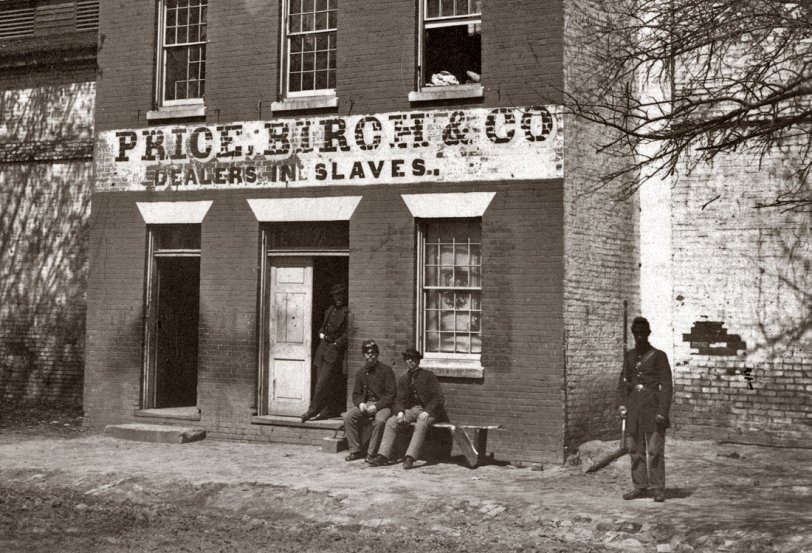
In a series of row houses that still stand on Duke Street in Alexandria, Virginia, the selling and purchase of human beings, in the form of slave trading, occurred on a massive scale. This series of photographs provide evidence of the conditions of the slave pens, or holding areas, where enslaved people awaited auction in Alexandria or transportation to other major slave-trading sites in the South. Alexandria provided an excellent location for slave auctioning, because of a potential of an excess number of slaves from Maryland and Virginia who could be sold. The city was also on the railroad and the Potomac River; slaves could be easily transported to cotton or sugar plantations in the Deep South following a sale. The slave trade firm of Franklin and Armfield was established in 1828, and by 1835, when it bought the Duke Street property, the firm was responsible for nearly half of the slave trade by sea between New Orleans and the Virginia-Maryland area.
The Duke Street complex was a successful operation, and therefore the slave pens were larger and offered more amenities than may have been present at other, similar locations in the antebellum South. This complex contained a kitchen for the enslaved people, as well as a tailor shop to dress them for the slave market. There was also either a hospital or an infirmary located on the premises to make sure that the “commodities” would be as healthy as possible to fetch as large a profit as possible. For this purpose, the inhabitants of the pen were often fed and clothed better than privately held slaves. In this case, the enslaved people also had access to an outdoor courtyard for fresh air and exercise, though the area was surrounded by tall brick walls to prevent escape.

This slave pen complex was owned by a series of slave-trading firms until the city of Alexandria surrendered to the Union army in 1861. After the surrender, the Union army used the facility as a military prison, to hold such inmates as soldiers found in the city without passes as well as people caught selling alcohol to soldiers or Southerners found jeering the Union troops. During the war, the property was used as L'Ouverture Hospital, Contraband Barracks, named after the Haitian Revolutionary leader Toussaint L'Ouverture, and housed black soldiers and other free people. The pens were torn down in 1870, and the building then spent nearly a century as a nondescript Alexandrian row house. In 1996 the house became the headquarters for the Northern Virginia Urban League. The building was renamed Freedom House, and contains offices and also a museum in the basement.


h
ReplyDelete